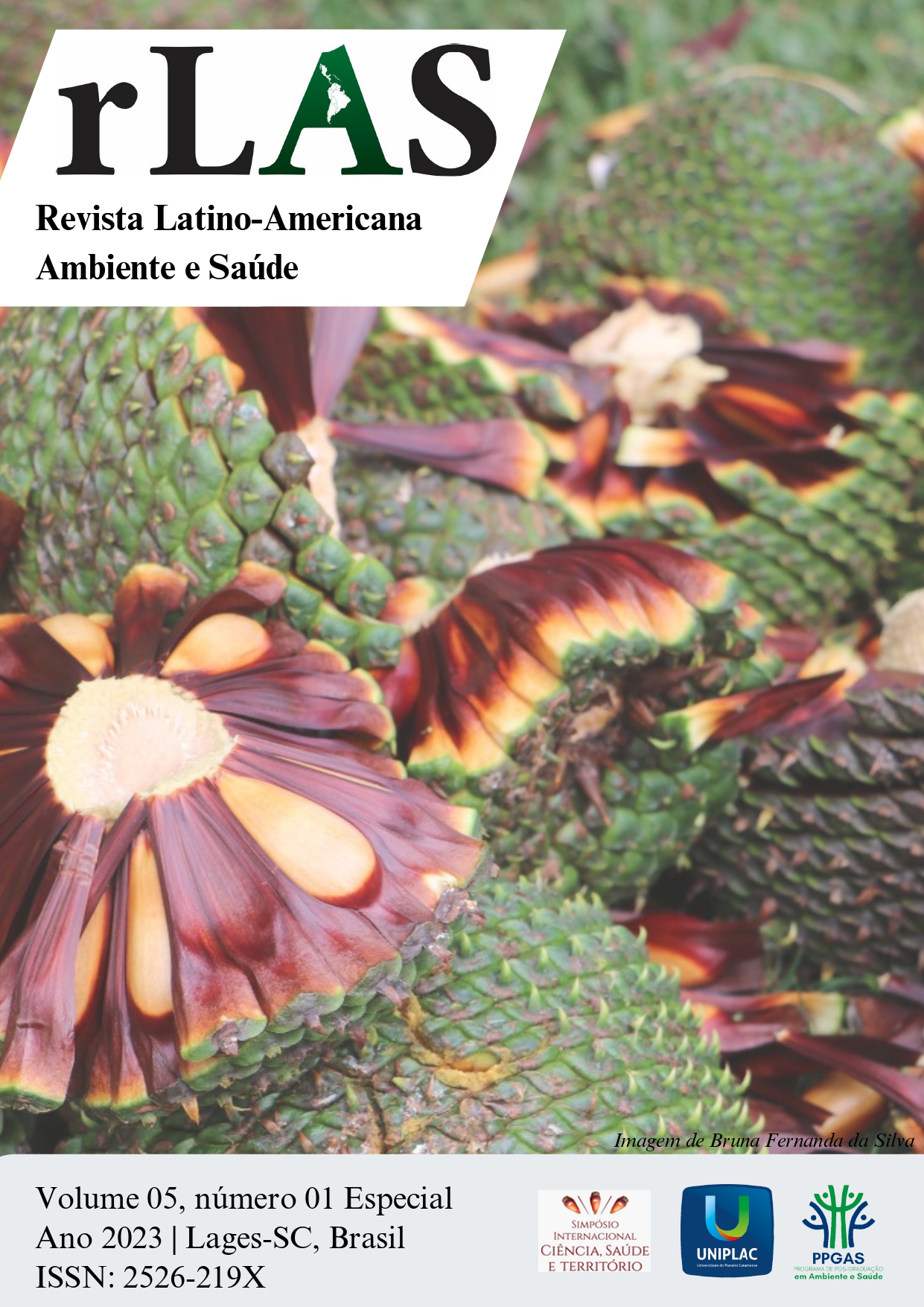Arsenic content in constructed soils after coal mining in the southern state of Santa Catarina
Keywords:
Pollution, Toxic element, Recovery of degraded areasAbstract
In the southern part of Santa Catarina State has on coal mining exploiting one of its main economic activities. However, the mining practice has been generating serious
environmental damages. Among which the release of trace elements on the environment
has emerging the attention of regulatory agencies, it is the case of arsenic (As). The As is
a metalloid, highly toxic and present in some mining areas. In this context, the main
objective of this study is to determine the arsenic content and calculate the contamination
factor (FC) and the geoaccumulation index (IGEO) of As in five mining recovering area's
soils in Santa Catarina state. The Ar content was analyzed by the acid extraction method
USEPA 3050B and quantify in EAA-FG. Among five coal mining recovering areas in the
carboniferous basin, two spots in Lauro Müller have As content qual to Prevention
Values, in which the FC and IGEO fit in moderate contaminated class. The studied areas
located in Treviso have inferior content of as than Lauro Müller. These findings indicate
the need to specific ecotoxicology studies to coal mining soils in Santa Catarina in order
to discover more details about its impacts on the ecosystem
References
BITENCOURT, D. G. B. et al. Geração de drenagem ácida e de contaminação por metais pesados em perfis de solos construídos em área de mineração de carvão. Revista Brasileira de Ciência do Solo, v. 39, n. 6, p. 1821–1834, 2015.
BUNDSCHUH, J. et al. Arsenic in the human food chain: The Latin American perspective. Science of the Total Environment, v. 429, p. 92–106, 2012.
CALDAS, D. et al. Risk of ingesting As, Cd, and Pb in animal products in north Rio de Janeiro state, Brazil. Chemosphere, v. 164, p. 508–515, 2016.
CAMPOS, M. L. et al. Impactos no solo provocados pela mineração e depósito de rejeitos de carvão mineral Soil impacts caused by coal mining and coal mine waste. Revista de Ciências Agroveterinárias. Lages, v. 9, n. 2, p. 198–205, 2010.
CONAMA. RESOLUÇÃO No 420, DE 28 DE DEZEMBRO DE 2009. Diário Oficial da União no 249, p. 81–84, 2009.
DREWNIAK, L.; SKLODOWSKA, A. Arsenic-transforming microbes and their role in biomining processes. Environmental Science and Pollution Research, v. 20, n. 11, p. 7728–7739, 2013.
GAIVIZZO, L. H. B. et al. Potencial poluidor de rejeitos carboníferos: I - Caracterização química da água de lixiviação. Ciência Rural, v. 32, n. 5, p. 771–780, out. 2002.
HALDAR, S. K. Elements of Mining. In: Mineral Exploration. [s.l.] Elsevier, 2018. p. 229–258.
ISLAM, M. S. et al. Arsenic in the food chain and assessment of population health risks in Bangladesh. Environment Systems and Decisions, v. 37, n. 3, p. 344–352, 2017.
ITA, R.; ANWANA, E. D. Geochemical Assessment of Heavy Metal Contamination in rural and urban wetlands in Akwa Ibom State, Nigeria. New York Science Journal, v. 10, n. 11, p. 43–51, 2017.
MUNIZ, D.H.F.; OLIVEIRA FILHO, E.C. Metais pesados provenientes de rejeitos de mineração e seus efeitos sobre a saúde e o meio ambiente. 4 Ed. Porto Alegre: Universidade Ciências da Saúde; 2009. p. 83-100. ISSN: 1678-5398.
O’DAY, P. A. et al. The influence of sulfur and iron on dissolved arsenic concentrations in the shallow subsurface under changing redox conditions. Proceedings of the National Academy of Sciences, v. 101, n. 38, p. 13703–13708, 2004.
ROBERTSON, W.D. Sulfide Oxidation Mechanisms: Controls and Rates of Oxygen Transport, MAC Short Course. Handbook v. 22, pp. 163 -183, J.L. Jambor; D.W. Blowes (eds.), Waterloo, Ontario, May 1994.
SAHOO, P.K., EQUEENUDDIN, S.M. POWELL, M.A. Trace Elements in Soils around Coal Mines: Current Scenario, Impact and Available Techniques for Management. Current Pollution Reports, v. 2, n. 1, p. 14, 2016.
DE SOUZA, A.C. M. et al. Arsenic Exposure and Effects in Humans: A Mini-Review in Brazil. Archives of Environmental Contamination and Toxicology, v. 76, n. 3, p. 357–365, 19 abr. 2019.


